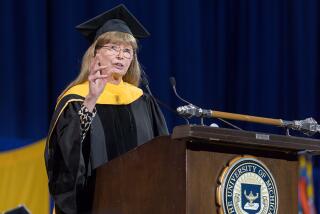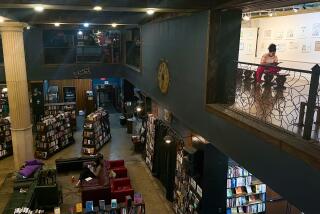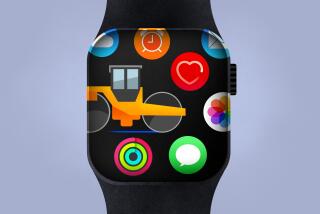In the Beginning : Now There Is One on Every Block--but in 1978, Computer Stores Were Considered a New Business Phenomenon
- Share via
BY MARCH, 1978, ComputerLand seemed to be making headway. Sales of the Apple II were picking up steam. Nothing could stop them now, not even the memory of John Martin, the company’s franchise consultant. Although Martin had been gone almost a year, his sudden departure had left many ComputerLand employees uneasy. Few considered it coincidence that, other than William Millard, ComputerLand’s founder, and Edward Faber, the company’s president, Martin was the only man who had stock in ComputerLand. Millard’s reluctance to give equity in his companies was legend. To many, the reason for Martin’s quick exit was patently clear.
Chris Lundberg, Sugu Aria and Richard Desman certainly didn’t consider it coincidence. On the first Monday in March, 1978, the three men, constituting all of Faber’s top executives, quit. Desman, who had been in charge of division operations, left to join Phil Reed’s new company, Energy Technology. Lundberg and Aria went to the main competition, Byte Shop.
Byte Shop appeared to have every advantage over ComputerLand. It had 50 stores, better distribution and the same products. But there was one element it lacked--Ed Faber. In a few months, Byte Shop faded into the background like every other erstwhile competitor.
And not once did ComputerLand stumble. In the face of beefed-up competition that March, it prepared for growth and expansion. An article in the April 24, 1978, issue of Fortune read in part: “Sandwiched between a liquor store and a bar at the edge of San Francisco’s Financial District is a new business phenomenon: a computer store. ComputerLand is one of 40 stores in a fast-growing chain.” The article, complete with a picture of the San Francisco store and Faber, said that ComputerLand took in $875,000 in franchise fees and $500,000 in royalties in 1977, its first year.
Before the article appeared, ComputerLand had averaged only three inquiries from potential franchisees a week. Now, upward of 10 a day called. Before, the only people interested in ComputerLand franchises had generally been “techies” and hobbyists who loved the machines more than the money they might one day reap. The new group was different. For instance, Tom Niccoli, a young IBM systems engineer, was tired of the corporate labyrinth. He read the Fortune article and promptly flew from Arizona to see Faber. By the end of the day, Niccoli had Faber convinced that he had installed enough large IBM computers in Phoenix, Tucson and Las Vegas to be able to handle all three territories for ComputerLand. What Niccoli couldn’t handle was the $2,000 deposit for the first store in Phoenix. After talking to several people about the deal, he ran into Tom Beckis, an IBM salesman with an accounting and business background, something Niccoli lacked. Beckis put up the money, and the two partners opened their Phoenix store in January, 1979. They would lead the network that year with $870,000 in sales. Stores in Tucson and Las Vegas followed, and Niccoli and Beckis would soon be the most powerful combination in the whole chain.
Whatever outward differences the many new franchisees from all over the country might have had, they all held one basic quality in common--they sold. Whether they had sold big computers or worm farms in the past was not important. The new breed was looking for something fresh, and it wasn’t a 9-to-5 suit-and-tie future. They were in business for themselves, and for them the heart and soul was selling.
To Millard an increase in demand meant it was time to raise the ante. Millard liked formulas, and he had created one for the buy-in franchise fee. The fee, he said, would be based on 5% of average retail sales. The fee went up to $25,000. To Faber’s delight, customers kept buying franchises.
Sept. 21, 1978, was ComputerLand’s second birthday. The company had 52 franchises in every corner of the world. Sales that had only reached $500,000 the first year were pushing $10 million for 1978. And they knew the wave they rode was far from its peak. Perhaps some also sensed that Apple’s magic had only just begun.
Those who could see just one year into the future could picture the outline of that second revolution in microcomputing--the electronic spreadsheet, software that would bring magical manipulations of equations and formulas down to the touch of a key. When Personal Software introduced VisiCalc the next year, the success of Apple and ComputerLand’s marriage was guaranteed. The new program, ideal for small businesses and a reason in itself to buy a microcomputer, ran on only one machine, the Apple II. In the third quarter of 1978, the first full year that the Apple II had been on the market, ComputerLand overcame its debt and was running in the black.
From “Once Upon a Time in ComputerLand,” by Jonathan Littman. Copyright 1987 by Jonathan Littman. Published by Price Stern Sloan Inc., Los Angeles.
More to Read
Inside the business of entertainment
The Wide Shot brings you news, analysis and insights on everything from streaming wars to production — and what it all means for the future.
You may occasionally receive promotional content from the Los Angeles Times.










